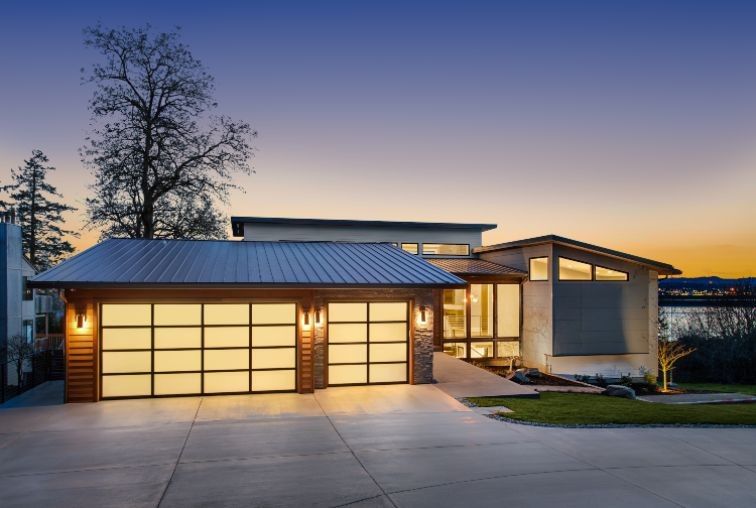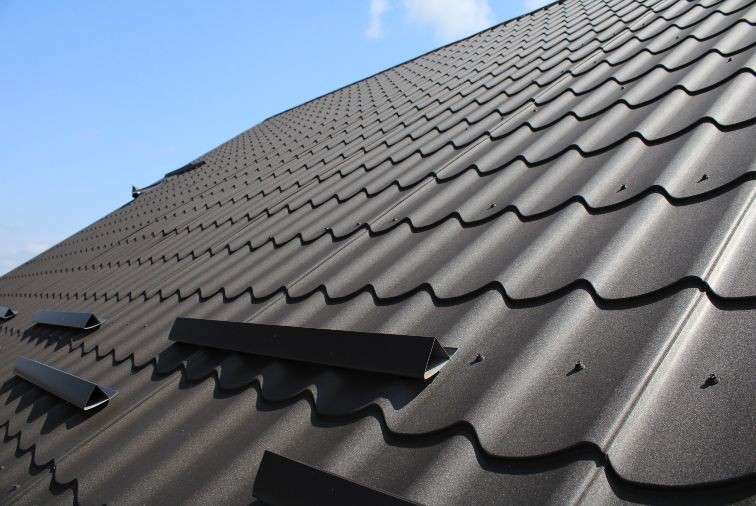
We have already written about the difference between asphalt shingles and metal roofs, but now we will go a little deeper into the topic to explain the advantages and disadvantages of metal roofs compared to other materials so that you, our clients, can consider all factors and make the right decision that meets your needs and budget when you’re planning your roof installation.
Metal roof advantages
Longevity
Metal roofs are pretty durable and long-lasting. Compared to asphalt roofs, and other materials they last much longer. Roofing contractors say that they last on average from 40 to 80 years, and sometimes they could last much longer. It all depends on which metal you choose as a roofing material.
It does not require frequent maintenance
Due to its good durability, the metal roof does not require frequent and expensive maintenance. It is enough to check from time to time that everything is in place so that there are no risks of leaks. It is economical so that is one big advantage of metal roofs.
Trustworthy
A metal roof is pretty much a safe option. Roofing specialists say that it can take wind velocity up to 140 miles per hour. They will probably not crack, and they will certainly not burn in the flames of fire if a fire breaks out. This is especially significant for regions where fire risk is common.
Energy efficiency
Pre-painted metal roofs reflect the solar energy and re-emit most of the absorbed heat. This way they cool your home and reduce the need for cooling and energy consumption.
Sustainability
Most of the metal roofs are 100% recyclable after they touch the end of their usage, unlike most other shingle materials which become waste with a need of proper disposal. So, we can say this kind of roof is environmentally friendly, which is another big advantage.
Design
If you want your home to look nice, you won’t make a mistake if you decide to go with metal roof installation. There are many different colors and textures. A copper roof is a leader when we talk about the beauty of the roof.

Disadvantages of metal roof
Noisiness
Metal roofs can be much noisier in case of rain and ice. Again, this noise level also depends on which material is used, because there are softer and harder metals. Of course, as there is a solution for everything, so there is for this. The noise level can be regulated and decreased by additional attic insulation, but again, that increases the costs of roofing installation.
Expansion and contraction with temperature changes
Metal roofing material assemblies are designed to expand and contract with variations of temperatures. Depending on the climate, screws that are used during roofing installation can be degraded over time.
Possible danger during snowfall
We mentioned earlier that metal roofs are a safe option, but we need to mention that people need to be more careful when it’s snowing because it’s not rare for snow to slide off of metal roofs. It may cause injuries to people or stuff below – landscaping or gnomes.

Looks
Yes, metal roofs look very nice and that is its advantage. But, some metal materials change color over time, and sometimes that doesn’t look nice. So is this a disadvantage or advantage? It primarily depends on the metal material.
Price
The main disadvantage of metal roofs and the main factor why people often choose other materials is because the prices of metal roofs can be much higher than other materials. They can be up to 2-3 times higher.
Metal roofing materials
Now, you are probably more familiar with the topic. But for a better understanding of the metal roofing advantages and disadvantages, we want to say something about metals that are often used in metal roofing and their basic characteristics.
Copper is an incredibly durable metal that in ideal conditions, can last for over 200 years. Its best feature is that it is 100% recyclable, so roofs made of this material belong to green roofs. Zinc takes place in this category too, as one of the greenest roofs. When it comes to aesthetics, copper is the winning metal material. The downsides of roofs made of these metals are their prices. On the other hand, aluminum is a metal material that is often recommended for use on roofs in coastal regions. That’s because of aluminum’s resistance to salt corrosion compared to other metal roofing materials. And it is cheaper than Zinc and Copper. Finally, the most used metal material for roofing is steel, or to be more specific – galvanized steel. Galvanized steel is made from the layer of Zinc on steel to protect it from corrosion. This coat extends the lifespan of a steel roof. Also, it is the cheapest solution if you want a metal roof.
Conclusion
Now, when you have all the useful information and all advantages and disadvantages of metal roofs we can sum everything up. Considering all pros and cons, it looks like metal roofs would be the best option. Their main drawback is the high price, but if we recall that they last far longer and that are more durable compared to asphalt shingles or some other materials, it turns out that it would be a good investment. So if you can cover the initial costs you will take advantage of long-term savings as well as time savings. Of course, we need to mention the fact that they are very energy efficient and meet certain environmental standards.
If you decide to go with a metal roof, it’s important for you to choose a roofing company with roofing specialists and experience, to make sure the job will be done right. If you have any questions or need additional information, the Roofing Above All team is at your service. Feel free to fill out our contact form and we will get back to you as soon as possible.